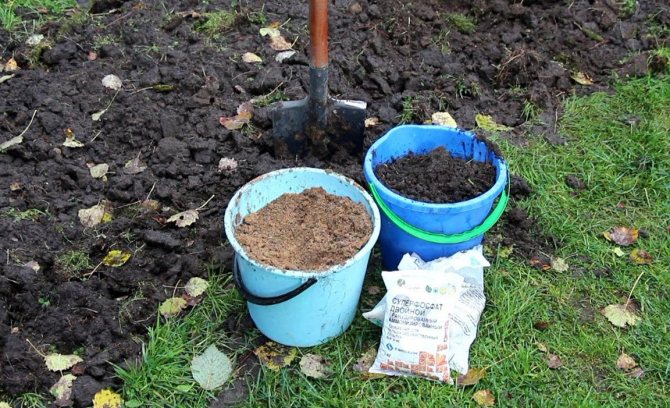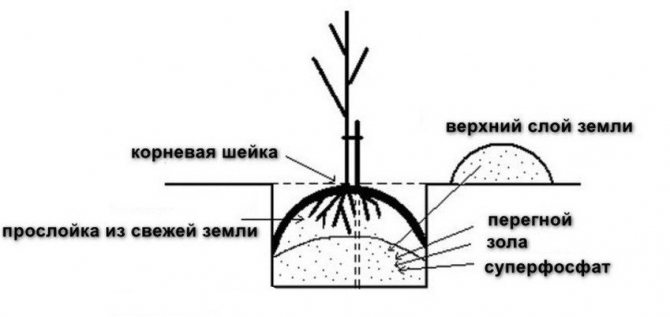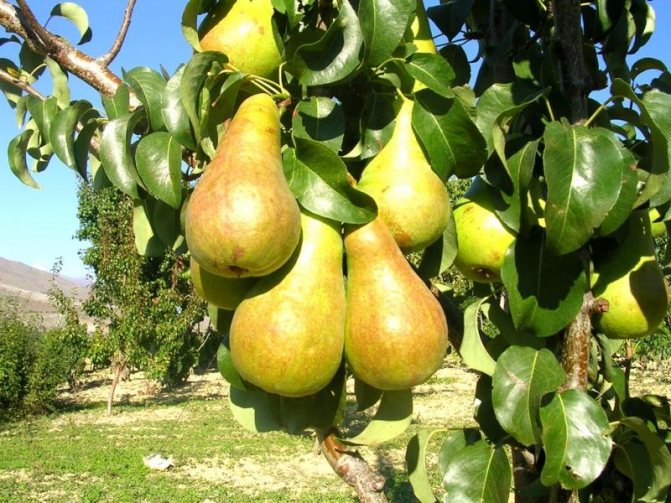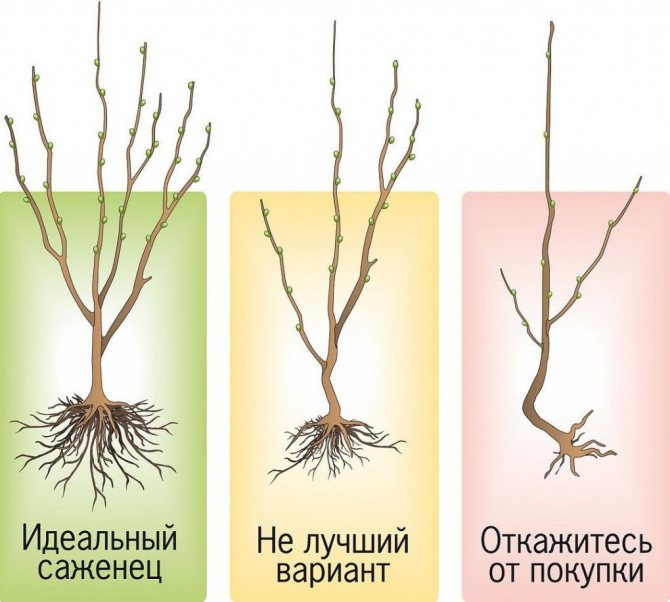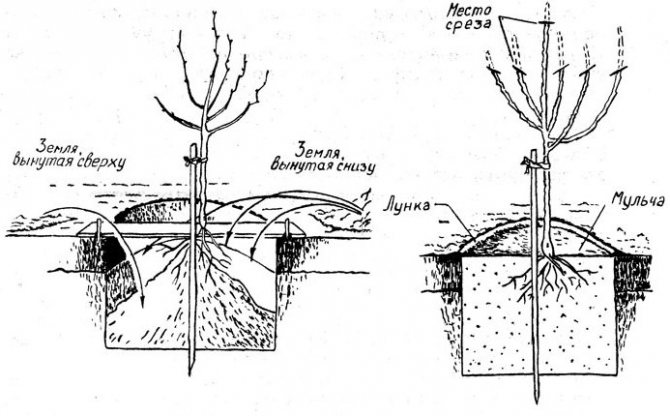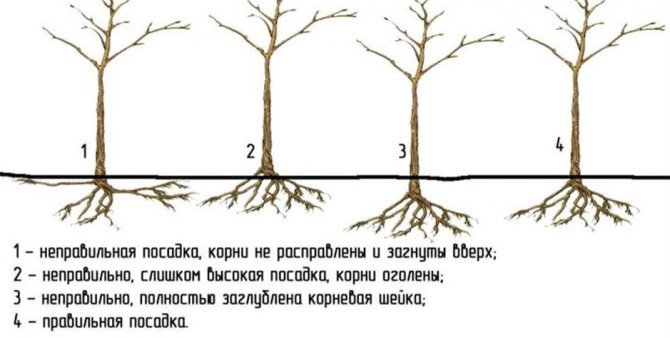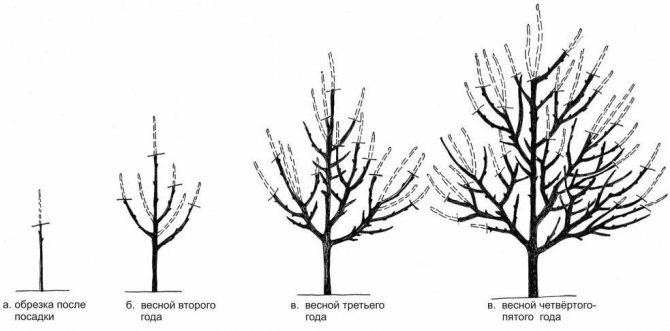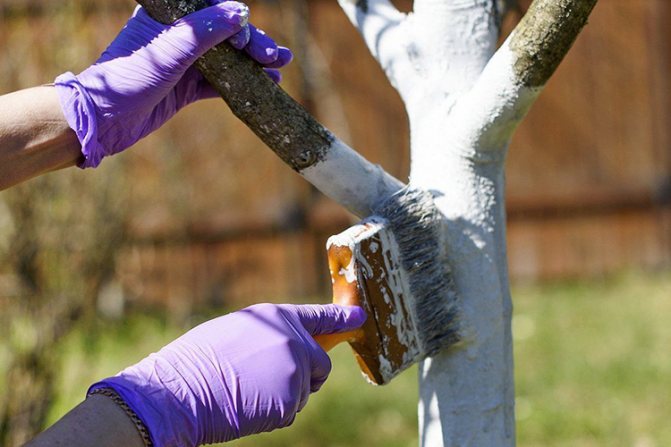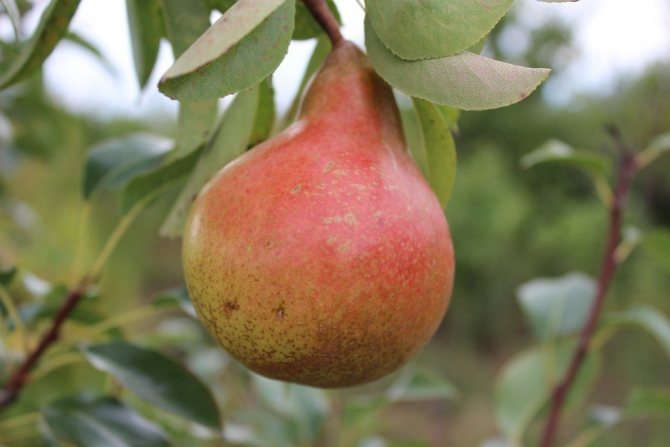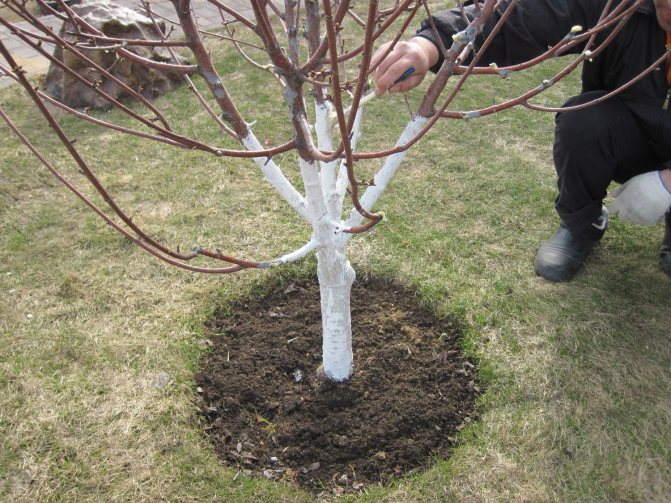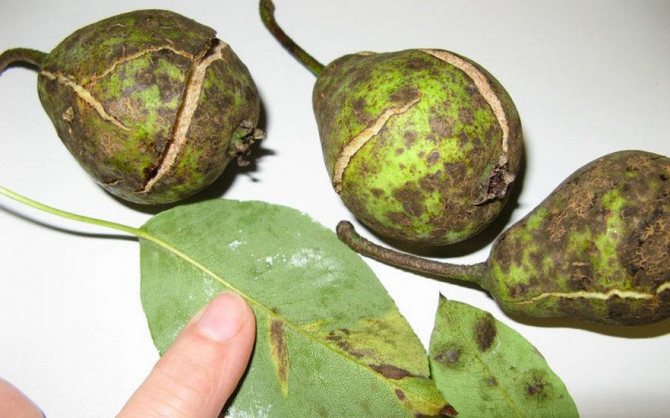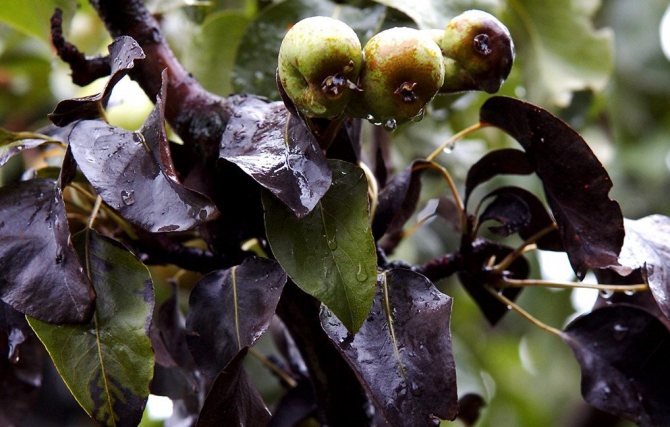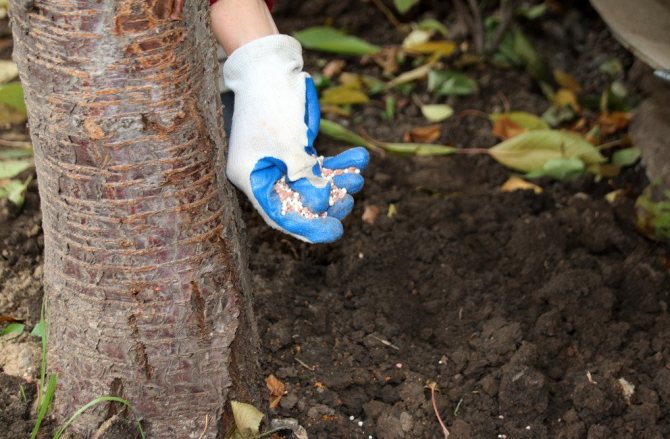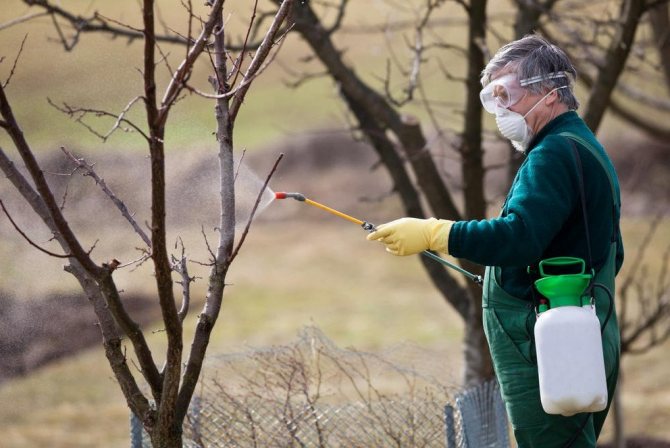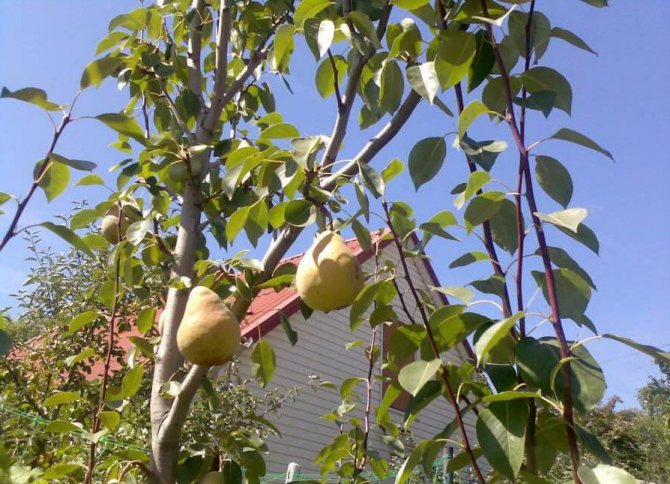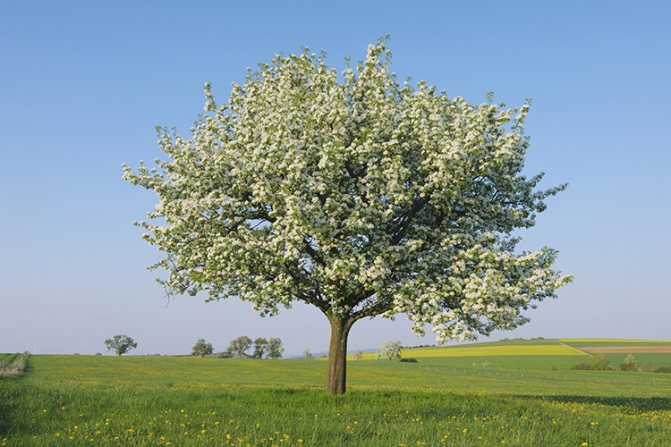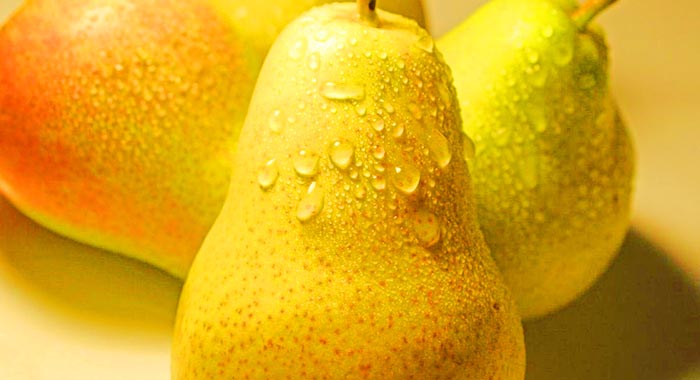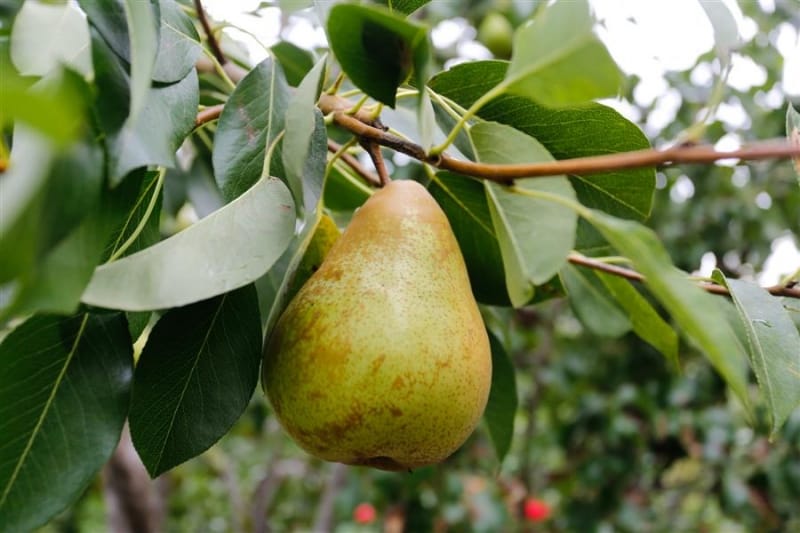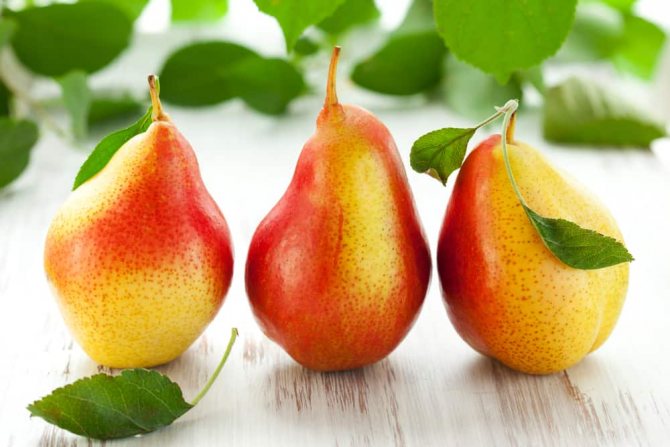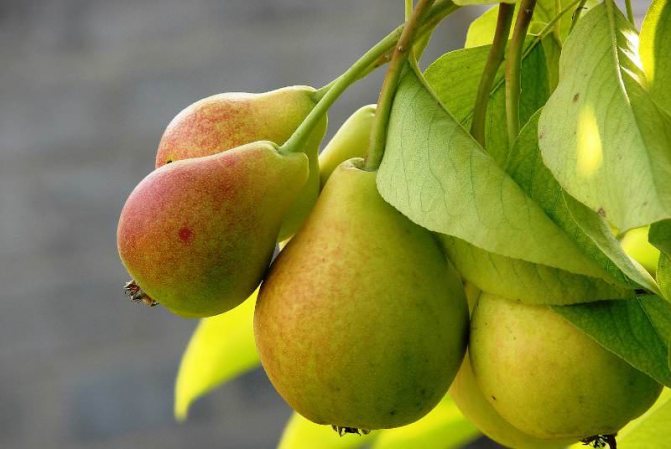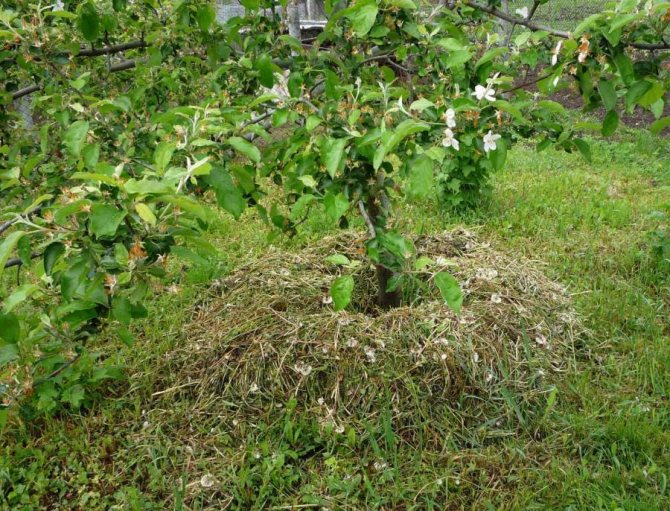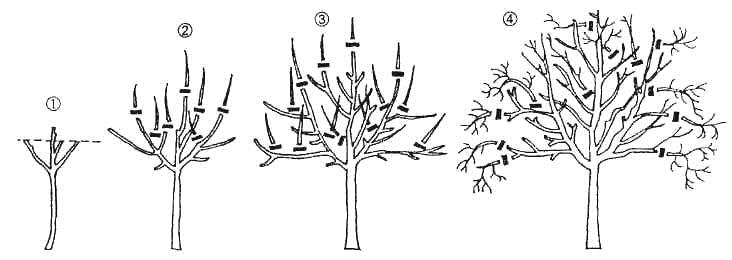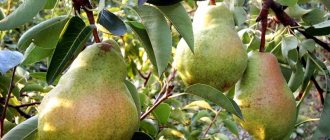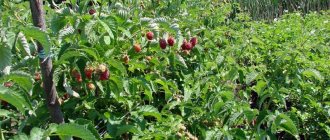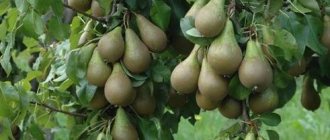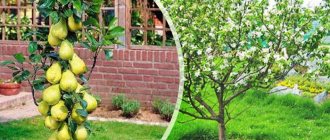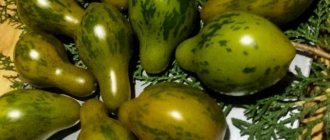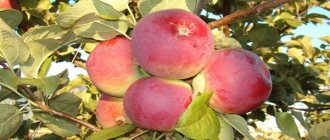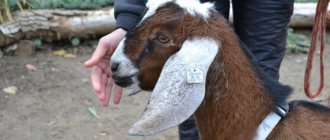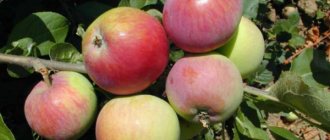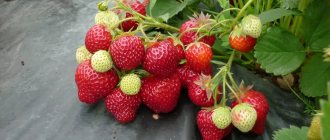The pear variety Beurre Bosc, zoned for almost all regions of Russia, is considered one of the oldest. It was bred in France in the 18th century, as a variety of an older predecessor. The name was given in honor of the French scientist biologist Louis-Augustin Bosc d'Antique. Today the variety is grown all over the world, and in Russia it has been on state testing since 1947. There are other commonly used names: Bere Apremon and Bere Alexander, and for the shape of the fruit, the variety is sometimes called Bottle or Bere Royal pear.
What kind of pear does it belong to?
Bere Bosk belongs to the autumn mid-season variety, the fruits begin to ripen in mid-September. Variety not frost-resistant, vigorous and thermophilic... Table type intended for fresh consumption.
Autumn varieties also include Karataevskaya, Vernaya, Kupava, Lesnaya Krasavitsa and Moskvichka.
Optimal growing conditions
The variety is warm and moisture-loving. The root system of Bere Bosk goes deep, so the distance to groundwater should be 2-2.5 m. Heavy and depleted soils are not suitable. The pear grows best on loose, light soils that are good for water and air.

Low-lying places, where rain and melt water stagnate for a long time, are not suitable for Bere Bosk pears. The site should be well lit by the sun. If it is protected from northern winds and is located in the southern (southwestern) part of the orchard, then the seedlings will feel great.
Breeding history and breeding region
It is a long-standing French variety that dates back to from the end of the 18th century. It was obtained by sowing an unknown species of seeds in a place called Apremont in France.
The variety got its name in honor of the specialist pomologist Bosc. In addition to the official name, the variety is also called Bottle, Bere Alexander, Bere, Bere Apremon.
The variety is very widespread in Russia in the North Caucasus and in the Krasnodar Territory. Also popular in former CIS countries such as Moldova, Belarus, Ukraine, etc.
In central Russia, Lyubimitsa Yakovleva, Kosmicheskaya, Osennyaya Yakovleva, In Memory of Yakovlev and Limonka feel good.
Testimonials
Natasha, Moscow: We have been growing this kind of pear for a long time. At first they were disappointed with her low fruiting, but then she began to delight us with a large and stable harvest. The tree is unpretentious in care, only you have to warm it for the winter. The pears themselves are very juicy and tasty.
Oleg, Volzhsky: I love Bere Giffard. There are many fruits, they are all very sweet, especially my grandchildren love them. The only sad thing is that the shelf life is very short. The whole family cannot cope with the harvest, we have to distribute it to friends.
Valeria, Podolsk: This pear was planted in our garden by my grandmother. From a young age I remember the pleasant taste of the fruit, I always ate it by both cheeks. At the moment, the tree is already very old, it is clearly surviving its last years, the amount of harvest has specifically decreased. But I have already bought several seedlings and plan to plant them on my site - I liked this variety too much.
Description of the variety Bere Bosk
The tree of this variety fast growing. With good care reaches high growth in a short period of time.
The crown, with its size, also has an irregular shape, in need of regular pruning. The geniculate branches do not differ in density and over time form a huge crown of a pyramidal shape.
The bark on the shoots is brown with a gray bloom. Shoots of medium thickness with buds pressed on them. There are many lentils and they are small in size.
The leaves are dark green in color, egg-shaped and have a characteristic glossy sheen. The thickness of the leaf blades is average, the edges are smooth, solid, the tips are slightly elongated. The petioles are not long, on average about 1 cm.
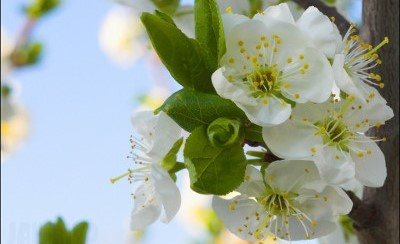

The flowers are large, the petals are oval, somewhat oblong. In inflorescences from 10 to 20 flowers.
The tree blooms late enough in spring to avoid the threat of freezing.
This variety has fruits very large, the average weight of which is 180 g, and the maximum weight can reach up to 250 g.
The shape of the fruit ranges from simply oblong to bottle-shaped. Moreover, even the fruits of one tree can be visually different.
INTERESTING: The name "Bottle" variety received for some similarity of the fruit with the shape of the bottle.
The peel of the Bere Bosk pear is very thin, rough, and at the onset of ripeness it acquires a “rusty” color. During storage, the fruits change color to golden-bronze.
The peduncle is curved, long and strong. The funnel is almost invisible. The seeds are small, in a bulbous nest.
Summer
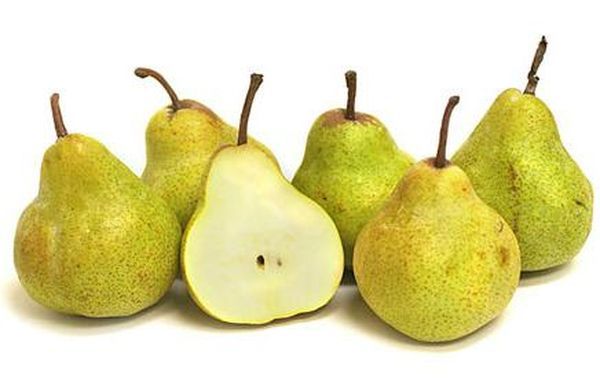

The pear garden of many gardeners includes the summer varieties of the Bere group. Each summer variety has its own description. Consider the most popular varieties of pears in this group, which bear fruit in the summer months.
Williams
It is a medium-sized variety that has a broad-leaved, asymmetrical crown. Often the crown has a rounded pyramidal or wide pyramidal shape. Young trees grow quickly. However, their growth rate slows down at the age of 10–12 years.
Abundant fruiting. Fruits weigh about 170 g. With proper care, they can reach 200 g in weight. The pears are oblong in shape. Their surface is slightly bumpy. The rind is thin, very fragrant and has a glossy sheen.
Clapp's Favorite
The variety has been known for about 150 years. This is a hybrid that was obtained by American breeders Tadeusz Klapp. Williams and Forest Beauty were crossed to obtain this variety. Forms tasty and large fruits.
Characteristics
A young tree begins to bear fruit at the age of 6-8 after planting. Propagated only by seed stock or by seedlings of predominantly cultivated varieties.
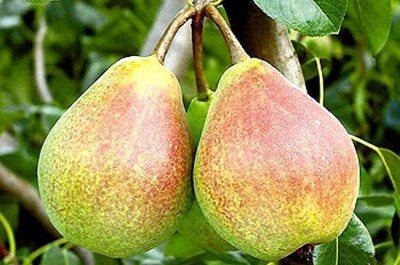

17-18 year old tree bears harvest 80-100 c / ha, 30 year old tree - already up to 180 c / ha.
High yield is demonstrated by such pear varieties: Orlovskaya Krasavitsa, Gera, Rogneda, Skazochnaya and Memory Zhegalov.
Full ripening of the fruit begins in mid-September from 5th to 15th.
The fruits ripen unevenly, but they can hang on the branches for a long time without crumbling even in strong winds.
ATTENTION: The main disadvantage of the variety is its very low frost resistance.
The trees are relatively safe from frost only in the Krasnodar Territory or on the Black Sea coast... In other regions, freezing temperatures within 28-30 degrees can destroy a tree all the way down to the roots.
Elena, Nika, Carmen, Nadyadnaya Efimova and Dessertnaya Rossoshanskaya demonstrate good frost resistance.
According to these indicators, the Bere Bosk variety is to the most not winter-hardy varieties of pears. Also, a tree of this variety is observed poor drought tolerance. Transportability and storage of fruits are good.
But with a long stay in a refrigerator, fruits lose their pleasant taste, the pulp from tender becomes dry and brittle.
Free pollination... For the best result of fruit ovary on the site or, in extreme cases, in the nearby area, you need to have pollinator varieties.
They are considered the best pollinators for this variety: Bere Napoleon, Williams, Bere Ardanpon, Bon Louise.


The tree as a whole is unpretentious to growing conditions and soil composition.
Grows well and bears fruit on light sandy soils.
Juicy and sweet taste fruit is estimated at 4.8 points on a five-point scale.
The pear has a very delicate creamy pulp with a pleasant melting consistency.
Present almond notes and a characteristic aromatic scent.
REFERENCE: The Bere Bosk variety has repeatedly participated in breeding work and is the basis of many cultivars. Of the 20 subsidiary varieties, 7 are zoned: Bergamot, Svarog, Tikhonovka, Verbena, Chernomorskaya Yantarnaya.
The chemical composition of the fruit:
| Structure | number |
| Sugar | 9,0% |
| Ascorbic acid | 4.6 mg / 100 g |
| Dry matter | 14,7% |
| Acids | 0,2% |
Ripening period
The harvest ripens in September. It is noteworthy that the ripening of pears is uneven, and not only the size, but also the shape of the fruit on one tree can differ from each other.
Read next: Apricot Khabarovskiy variety description photo reviews
Did you know? According to the "Big Food" section of the Guinness Book, the record-breaking pear was grown in South Wales: in 1979, a fruit weighing 1405 g was recorded.
Like all late varieties of pears, Bere Bosk fully ripens only in the second half of September and early October. They are stored for about one and a half to two months, their safety depends on the conditions: the cooler the room, the higher the keeping quality of the fruits. If the fruit is stored for more than two months, it will lose its flavor. They tolerate transportation well.
The harvest ripens in September. It is noteworthy that the ripening of pears is uneven, and not only the size, but also the shape of the fruit on one tree may differ from each other.
Photo
Planting and leaving
The best time to plant seedlings is autumn. If you wish, you can plant a young tree in the spring, but experienced gardeners prefer the autumn period.
The pear is a thermophilic plant and loves the sun. Therefore, the landing site must be well lit and protected from the wind.
The soil should be sandy-black earth. If there is none, then a certain amount of black soil must be added to the pit during planting.
If the seedling is not alone or there are other fruit crops nearby, then the distance between neighboring trees must be taken into account, it should not be less than 5 meters.
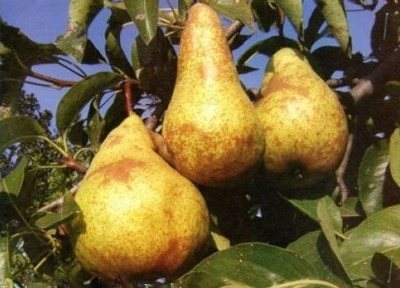

Pear Bere Bosc is a very tall tree and has the property grow strongly in height and width, therefore, she needs to provide sufficient space.
The landing pit is made about a meter in diameter and 60–70 cm in depth. But some experienced gardeners advise to do the depth of the hole as well. not less than 1 meter.
The pit preparation should be done two weeks before planting.
ATTENTION: If the Bere Bosk pear is not planted in autumn or spring, then the seedling must necessarily be with a large lump of earth from the previous place.
Black soil is laid at the bottom of the pit, and the selected soil is thoroughly mixed with organic fertilizers. Then a mound is made in the pit from the prepared soil and a seedling is placed on it.
The roots on the sides should be straightened. Next to the tree, you need to drive in a stake and tie it to the trunk. After that, cover everything with earth and gently tamp it.
A small loose roller should be made around the tree to retain water when watering and then slowly pour with two buckets of water. Sprinkle spilled soil with mulch.
REFERENCE: The main condition is abundant watering, since Bere Bosk does not tolerate drought.


The planted tree is taken care of in good watering 4 times a month. Then the tree is watered three times a season, but abundantly.
It is not worth using water from a well or well for irrigation; water from a barrel or garden container is better suited for this purpose.
You need to fertilize the tree depending on the poverty of the soil. If there are thickets of nettle or burdock nearby, then the soil is quite fertile and practically does not need feeding.
In other cases fertilizer must be applied along with watering three times a year. Typically, these fertilizers consist of urea, superphosphate, organic matter and potassium.
Bere Bosc is a wildly growing pear variety, so you should pay special attention to pruning.
Compliance with several rules will be sufficient:
- Pruning twice a year.
- Branches must be made of the same length, cut too long.
- Mandatory removal of young growth, since parasites can live and winter on it.
- The lower branches are not pruned.
You need to work with a sharp pruner, at a right angle, and cover the trimming points with garden putty. While the tree is small for the winter it can be covered entirely.
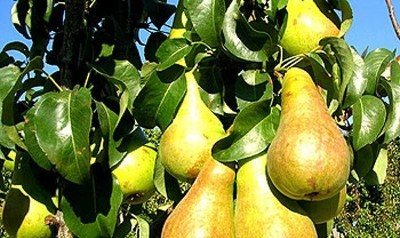

Cover the crown with brushwood, and wrap the trunk with insulating material.
And when a snow cover appears, carefully cover the tree with snow, especially the trunk circle.
But later, when the tree grows up to several meters, it will be enough to insulate only the trunk.
conclusions
- Pear Bere is a tasty, vigorous variety, represented by a whole set of selections (their characteristics differ slightly).
- Use only one and two year olds to plant your garden. Old seedlings may not take root.
- Spring dressing is done by root, foliar. Apply fertilizers according to the calendar, you should not be especially zealous with organic matter.
- In the first year after planting, the trees are not cut, for the second, small moldings are already needed.
- Bere's winter hardiness is low, which should be taken into account when planting a garden.



